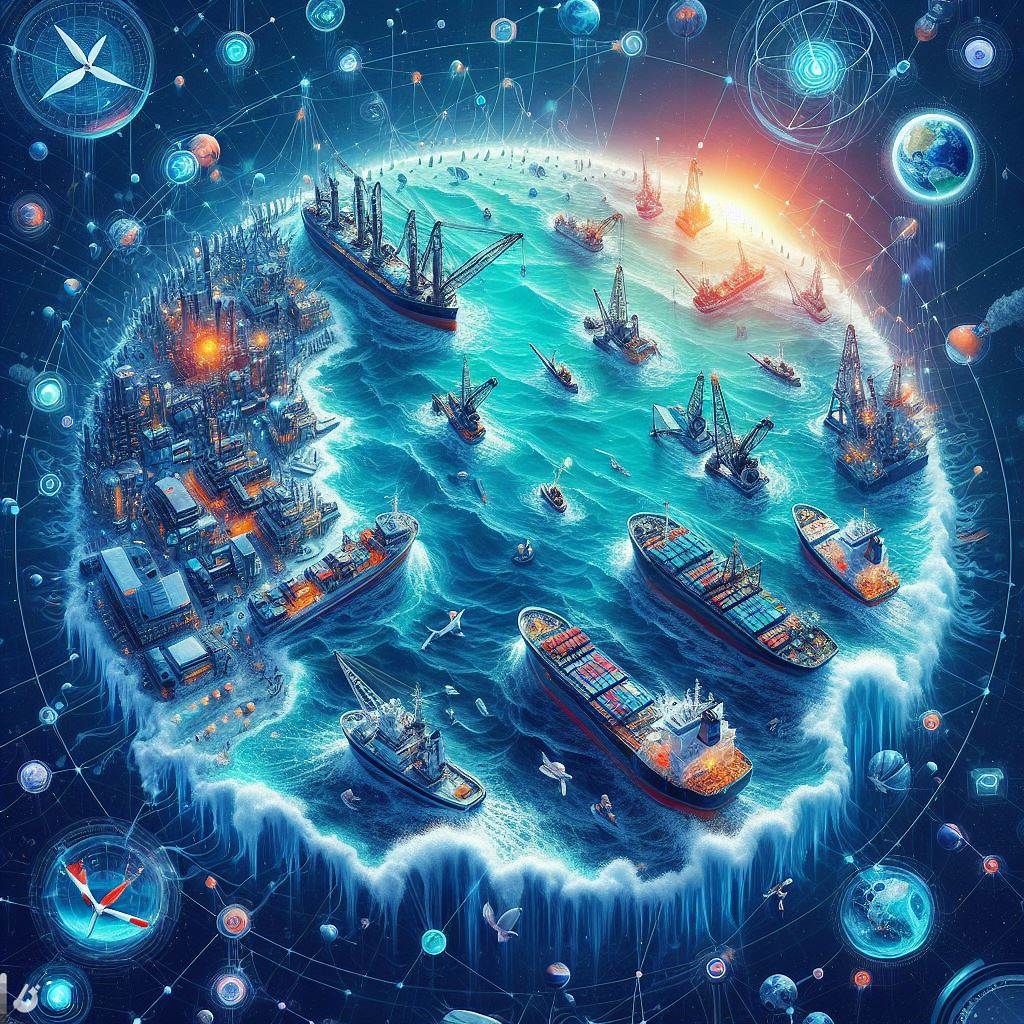
Human activities in the world's oceans, including fishing, shipping, and energy production, contribute significantly to global economic growth. These ocean-based industries generate over US$1.5 trillion annually and support 31 million jobs worldwide. However, a recently published study sheds light on the previously uncharted territories of industrial activity in the ocean, exposing the challenges and opportunities for sustainable management.
The study, led by researchers at Global Fishing Watch in collaboration with experts from Duke University, University of California, Santa Barbara, and SkyTruth, utilizes a combination of satellite images, vessel GPS data, and artificial intelligence to unveil human industrial activities across the ocean over a five-year period. This initiative aims to address the critical need for transparency in monitoring the "blue acceleration" to prevent environmental degradation and illegal activities.
One significant finding is that approximately 75% of the world's industrial fishing vessels are not publicly tracked. This hidden activity, concentrated around Africa and South Asia, challenges previous assumptions about the scale, scope, and location of fishing. According to the researchers, "Our new map and data provide the most comprehensive public picture available of industrial uses of the ocean."
While many vessels use Automatic Identification Systems (AIS) to broadcast their identity and location, these systems have blind spots. Not all vessels are required to use AIS, and illegal activities may involve disabling or tampering with these devices. Additionally, offshore structures, such as oil platforms and wind turbines, contribute to the incomplete picture due to confidential or outdated location data.
To address these gaps, the researchers employed artificial intelligence models to analyze 2 million gigabytes of satellite-based radar and optical images taken between 2017 and 2021. The results revealed a significant discrepancy between public AIS data and the actual scale of industrial activity in Asia, Europe, and the Mediterranean.
The implications of this research extend beyond unveiling hidden industrial activities. The freely available data through the Global Fishing Watch data portal holds promise for:
Monitoring fishing in data-poor regions, aiding fishery managers in developing countries.
Combating illegal, unreported, and unregulated fishing by identifying and targeting non-compliant activities.
Addressing sanction-busting trade by shedding light on maritime activities that breach international economic sanctions.
The study also provides valuable insights into climate change mitigation and adaptation, helping quantify greenhouse gas emissions from vessel traffic and offshore energy development. The data can support efforts to enforce climate change mitigation programs and assess the environmental footprint of offshore structures.
Healthy oceans are crucial for human well-being, and this research aims to contribute to evidence-based decision-making for fair, effective, and sustainable ocean management. As the world continues to exploit the vast potential of the ocean, transparency and accurate monitoring become indispensable tools in preserving marine ecosystems and supporting responsible economic growth.